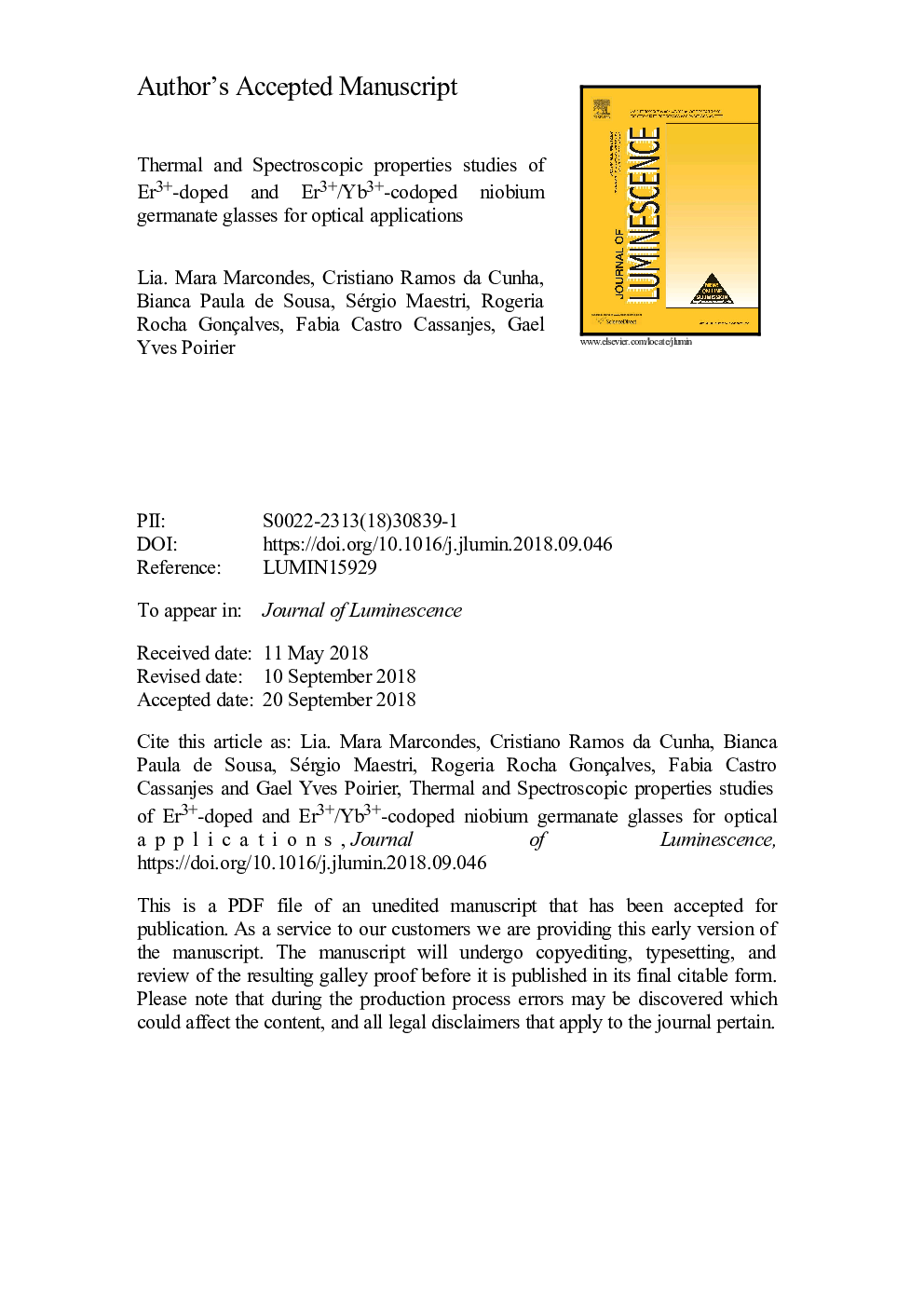| Article ID | Journal | Published Year | Pages | File Type |
|---|---|---|---|---|
| 11001956 | Journal of Luminescence | 2019 | 33 Pages |
Abstract
Er3+-doped and Er3+/Yb3+-codoped GeO2-Nb2O5-K2O glasses were prepared by conventional melt-quenching method. Thermal and spectroscopic analysis were performed. The niobium insertion into the glass structure has decreased the OH groups resulting in a slight increase in the luminescence efficiency as the niobium content. Glass network structure is modified depending on rare earth doping concentration and niobium content. The number of bridge oxygen bonds and nonbridge oxygen bonds is altered and consequently the crystallization composition. The spectroscopic features were discussed in terms of niobium concentration and its influence on the applications as optical devices. The addition of niobium broadens the emission band in the region of 1.5â¯Âµm covering C, S and L-telecommunication bands. The gain coefficient has calculated establishing high potentiality to use the niobium germanate glasses for optical amplification. The codoping by Er3+/Yb3+ intensifies the emission in the NIR and visible (upconversion) region in relation to the doped samples and may be interesting for application as visible and near-infrared emitters. In addition, the codoped samples with variable niobium contents have potential as visible tunable phosphors emitting either green or red light. Accordingly, the niobium germanate glasses are interesting matrices for rare earth ions doping and for the development of optical devices, such as visible and NIR laser and optical amplifiers.
Related Topics
Physical Sciences and Engineering
Chemistry
Physical and Theoretical Chemistry
Authors
Lia Mara Marcondes, Cristiano Ramos da Cunha, Bianca Paula de Sousa, Sérgio Maestri, Rogeria Rocha Gonçalves, Fabia Castro Cassanjes, Gael Yves Poirier,
